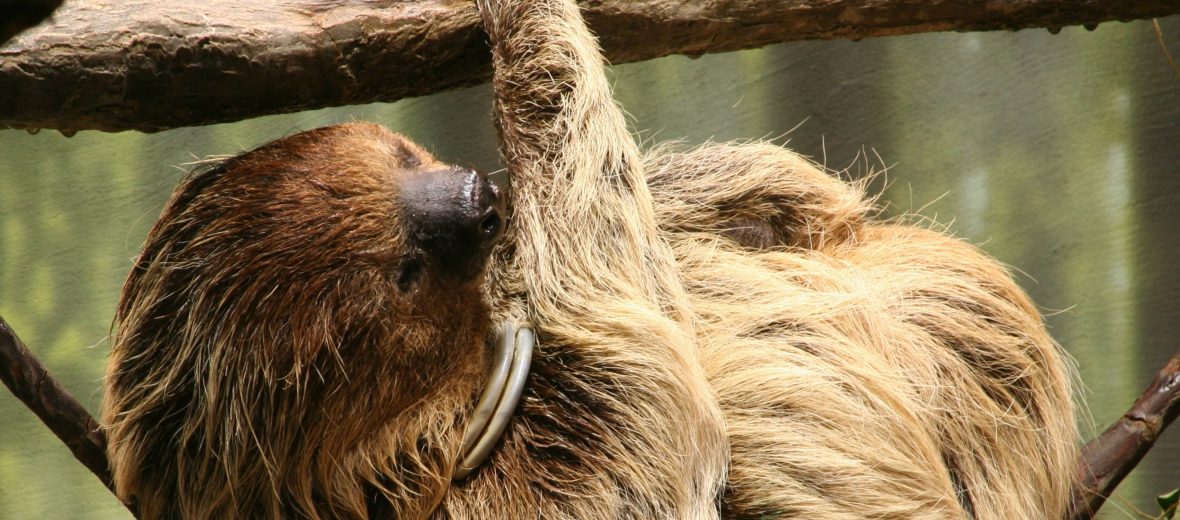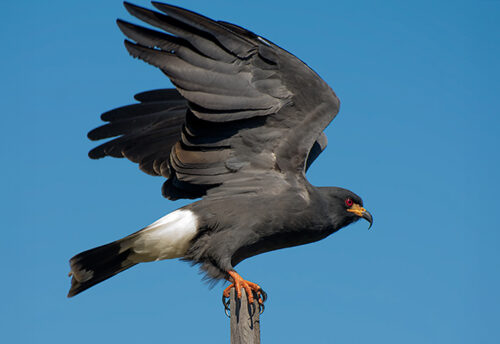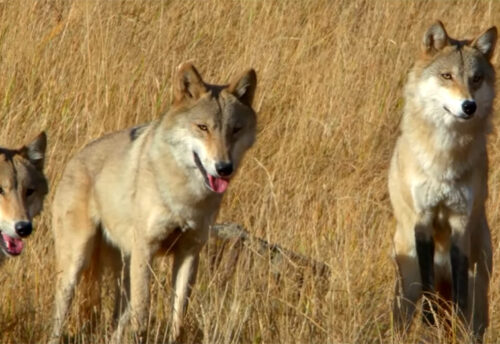
The Linnaeus’s two-toed sloth, aka southern two-toed sloth, Linné’s two-toed sloth, or Unau, can be found, with a little searching, in southern Central America on down into northern South America and even some parts of Peru and Brazil. These sloths are widely considered to be the slowest mammals in the world. Hey, slow and steady, eh? Although, these critters aren’t going to be winning any races. There are no major threats to their survival, sans the typical habitat destruction issues, so these creatures are listed as Least Concern by the IUCN. They are occasionally hunted for bush meat, it is typically seen as taboo to eat them though, by many native cultures. Plus, they tend to stick to the higher canopies and are thus harder to hunt.
First the Stats…
Scientific name: Choloepus didactylus
Weight: Up to 14 lbs.
Length: Up to 2.3 feet
Lifespan: Up to 40 years
Now on to the Facts!
1.) Unlike other animals, but typical in sloths, their fur grows from their stomach to their back. This allows for rain water to drip off and away from their body.
2.) Sloths are so slow that algae literally grows on their fur. This gives many sloths a greenish coloration. Yep, their fur isn’t green in coloration, that’s algae.
3.) Due to their slow movement, they are also typically homes to many types of insects, like roaches.
4.) Yes, they do have 3 toes on their hind feet – like all sloths do, but they are named for their forelimbs, which have 2 toes each.
5.) Each individual spends their entire life within a 10 acre territory. Their territories also overlap.
But wait, there’s more on the Linnaeus’s two-toed sloth!
6.) Although typically solitary, females can often be found peacefully navigating in the same tree together.
7.) Due to their low nutrition diet, these critters can spend up to 20 hours a day sleeping.
Did you know…?
Like other sloths, these creatures only venture to the ground once a week to defecate, then make a sloth-like hasty retreat back up the nearest tree to safety.
8.) They are nocturnal (active at night).
9.) When navigating on land, they are awkward and clumsy. However, when in the water, they become graceful swimmers.
10.) Though typically silent, if threatened or scared, they can emit cries, moans, and will also hiss.
But wait, there’s still more on the Linnaeus’s two-toed sloth!
11.) While mostly depending on camouflage, they can also bite and swipe with their claws, if necessary.
12.) Linnaeus’s two-toed sloths are primarily herbivores (eat plant matter). They consume leaves, small twigs, fruits, berries, and a variety of other vegetation. However, they will also consume the occasional insect.
Did you know…?
A group of sloths is called a snuggle. And who wouldn’t want to snuggle with a sloth?
13.) The female typically initiates mating.
14.) It is uncertain if these creatures are polygynandrous (males and females have multiple partners) or polygynous (1 male mates with multiple females).
15.) Due to the year round warm weather, these sloths typically mate year round, but do have a higher mating concentration from March – April.
But wait, there’s still a little more on the Linnaeus’s two-toed sloth!
16.) Females undergo up to a 6 month gestation (pregnancy) that yields a single pup.
17.) After the pup is born, it will cling to mom’s belly for up to 5 weeks.
Did you know…?
Their 4-chambered stomach processes food so slowly that a meal may take up to 1 month to fully digest. Hence their slow movement. They simply don’t get a lot of nutrition from the food they eat.
18.) The pup becomes independent in up to 1 year. But they will continue to stay with their mom for up to 2 years.
19.) Jaguars, ocelots, harpy eagles, and crested eagles all prey on these sloths.
20.) The scientific name of Choloepus means lame foot, and is in reference to their extreme latency.
But wait, there’s still just a little bit more on the Linnaeus’s two-toed sloth!
21.) Sloths, in general, rarely need to drink standing water, as they get most of their moisture requirements from the foods they eat.
22.) While on the ground their top speed is only 6.5 feet per minute. While in the trees, their movement speed increases to a blinding 10 feet per minute.
23.) Roaches, mites, and ticks are just some of the creatures that can be found living in their fur.
24.) These sloths consume less than half the calories of other mammals of similar size.
25.) Their common name Unau translates to “Lazy.”
26.) Due to their lack of strong muscles, these creatures are unable to shiver, when cold. Therefore, they rely on the surrounding warm climate to keep them cozy.
Now a Short Linnaeus’s Two-Toed Sloth Video!
Be sure to share & comment below! Also, check out the Critter Science YouTube channel. Videos added regularly!
Want to suggest a critter for me to write about? Let me know here.
Think you know a lot about critters? Try your hand at these fun, free quizzes:
Photo credit: Dave Pape



